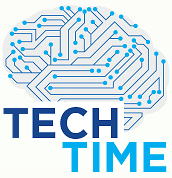Electronic health records (EHRs) have become much more common over the past decade, with federal incentives—and funding—for health systems and Medicare providers to implement computer systems, collect data, and report on outcomes. Overall, $35 billion has been allocated by the federal government to drive adoption of electronic charts.
But what about EHRs for behavioral health?
Generally, computer systems in the specialty of psychiatry have had limited adoption. In fact, adoption of EHRs is generally lower among specialists compared with primary care physicians. A 2013 study found that psychiatry was actually the medical specialty with the lowest EHR adoption rate.
Why the limited adoption of EHRs in psychiatry? Lack of comfort and familiarity with EHRs is one key factor. In a survey of psychiatrists conducted in 2012, more than 25 percent of psychiatrists said they weren’t comfortable using computers for clinical purposes, despite strong familiarity with consumer technologies for personal use. Another barrier is that using an EHR may be particularly distracting and even harmful to the therapeutic alliance for psychiatry visits, according to early research.
Another important barrier: finances and lack of resources. Because of the additional privacy and sensitivity surrounding behavioral health records as well as the added complexity, the government did not incentivize the use of electronic charts for nonphysician behavioral health providers, long-term care facilities, and addiction treatment centers.
But given the increasing adoption of EHRs—along with announcements in 2016 by the Centers for Medicare and Medicaid Services to provide financial incentives to long-term care, behavioral health, and substance use care providers—it’s only a matter of time before EHRs are the norm, not the exception.
Knowing how to effectively use EHRs in clinical settings can mean improved care, efficiency, and patient-doctor relationships—even improved communication. But this requires learning how to be attentive and computer proficient while using an EHR. It also requires that psychiatrists have an active voice and proactive stance to ensure EHRs are developed and responsive to the field’s needs.
In an early study of patient satisfaction for psychiatrists adopting EHRs, the authors found that “consistent with several decades of research in the nonpsychiatric realm, we found no change in satisfaction survey scores among adult psychiatric patients” in outpatient settings where EHRs were used versus paper charting, as measured by a modified form of the Rand Corporation’s previously validated Patient Satisfaction Questionnaire-18 (PSQ-18). The survey asked about items such as “Communication,” “Time Spent with Doctor,” and “Interpersonal Manner” and removed the original questions on “Financial Aspects” and “Accessibility & Convenience” subscales as research suggested that EHRs did not impact these factors.
Still, taking on an EHR can be arduous and difficult. Below are ways you can chart faster and smarter, so you can complete the work day in a timely manner.
Know Your Computer
To most effectively use EHRs, users must be familiar with their computer and the computer’s operating system. Nearly all health settings—from the Veterans Affairs Health System to Kaiser Permanente—use the Windows family of operating systems, as Windows is used by many large enterprise systems.
In particular, learn these three key things:
•
Copy, paste, and revise: Effective use of “copy-forwarding” or “cloned documentation” can increase efficiency by allowing you to duplicate a previously submitted note and modify it for use for a new encounter. But don’t submit and sign information that is out of date or not longer valid. This can lead to not only unreliable documentation and concerns from your patient’s other providers, but also legal issues: malpractice lawsuits, penalties, and imprisonment for falsification of data.
•
Use as many keyboard shortcuts as possible instead of clicking to save time: For instance, learn how to use Ctrl+x to cut, Ctrl+c to copy, and Ctrl+v to paste text. Pressing Shift+Home and Shift+End can select text on the same line for you.
•
Anticipate wait times and crashes, and plan backup activities: Despite advancements in computing, computer programs still experience freezes or crashes. If Internet browsers are being used for cloud-based EHRs, timeouts and delays can occur. Document at the end of the visit if possible, so that it is done at once. During delays, continue doing other work—such as filling out lab forms or handwritten prescriptions—while you wait for the computer to recover. Know how to reach computers that have been set aside in case there is a network crash.
•
Know when to quit, and to quit fast: If your EHR won’t work and is beset by crashes and delays, the fastest method is to quit and restart the program, followed by logging out and logging in again, followed by using your computer’s restart function, and, as a last resort, completely powering down and turning the device back on. If this is your daily struggle, you might want to be in the market for a new EHR.
Although these tips take an additional up-front investment of time, they will help you optimize your way around your computers, much like orienting yourself to a hospital for the first time. This investment will pay off and let you go home on time.
Know Your EHR
Good EHRs save you time by giving shortcuts, templates, and pre-saved order sets for quick use. Here are four EHR features that can make your workflow move faster:
•
Progress note templates: Have the most common mental status exams ready to paste or include into your notes. You can also create templates for assessments and plans for common diagnoses. This is particularly helpful if you have a homogenous patient population.
•
Patient templates: Think of this as the filing cabinet where you have previously stored all your patient handouts, therapy instructions, and medication risk/benefit explanations. With these templates in the EHR, you will know which handouts and worksheets you have previously given to your patient.
•
Text-expanding shortcuts: Some EHRs, like Epic, include smartphrases with smartlinks that can expand text. For instance, typing “TP/TC” can expand to “thought process/thought content,” thus saving you about 85 percent of typing time. If your EHR doesn’t support it, use of an app like Text Expander or Mac OS X’s built-in customizable shortcuts can provide similar functionality.
•
Favorited, pre-saved order sets: EHRs and prescription systems may allow you to save pre-set medication regimens and pre-set patient instructions. Never again will you have to find, copy, and paste that lamotrigine taper. ■
In the next issue of Psychiatric News, the authors review six steps to keeping the patient-doctor relationship alive in the age of the EHR.


